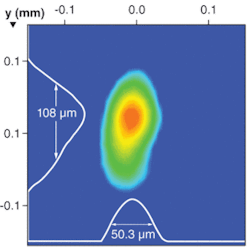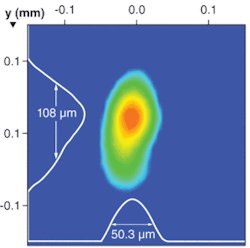Femtosecond pulses create microlenses in glass
Direct femtosecond laser writing is emerging as an alternative technique to lithography for fabrication of microstructures inside transparent materials. Researchers at the National Research Council and the University of Ottawa (Ottawa, ON, Canada) and Kansas State University (Manhattan, KS) have succeeded in creating microlenses within a variety of glass materials using high-fluence femtosecond laser pulses without increasing linear absorption or scattering.
By focusing 800 nm, 130 fs pulses with a peak energy of a few hundred nanojoules at a depth of 75 µm beneath the surface of fused quartz, an array of planar nanocracks form the shape of a biconvex microlens. This subwavelength, birefringent periodic structure with a corresponding refractive-index decrease of 2% acts as a microlens with an approximate 30 µm focal length. Similar lenses are formed in sapphire, mica, and other transparent substrates; however, the nanocracks do not appear to be ordered. The researchers say the exceptionally large refractive-index change that they create is stable, surviving to high temperatures. Contact Paul Corkum at [email protected]

